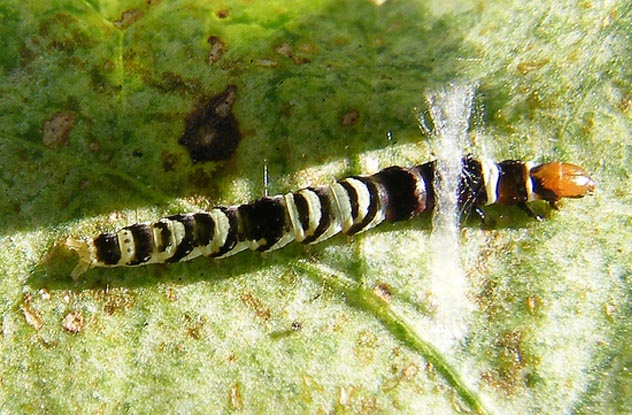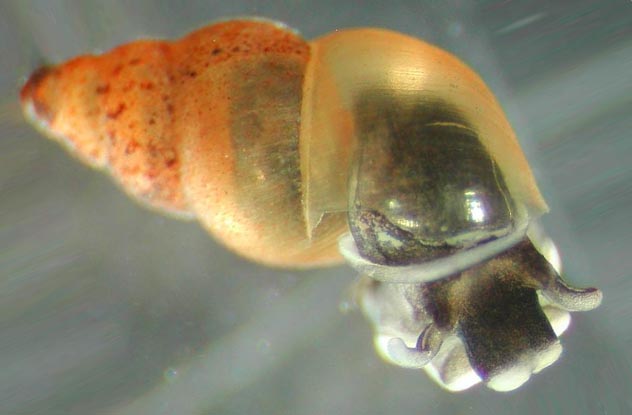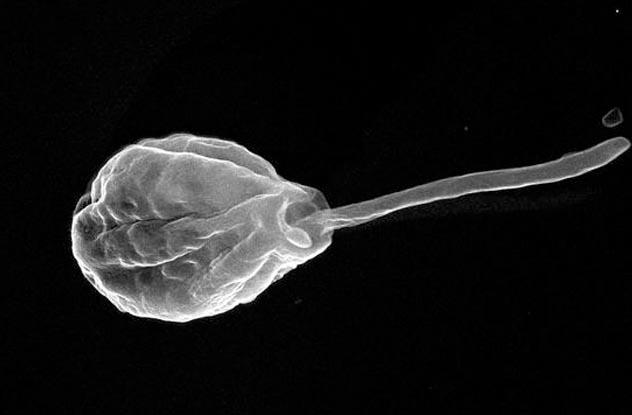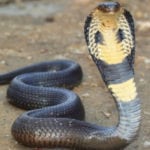 Facts
Facts  Facts
Facts  Weird Stuff
Weird Stuff 10 Fascinatingly Gross Secrets About Your Body
 Miscellaneous
Miscellaneous 10 Groundbreaking & Historical “Firsts” We Witnessed in 2025–So Far!
 Humans
Humans 10 Clever Ways People Have Cheated at Casinos
 Weird Stuff
Weird Stuff 10 Normal Items You Didn’t Know Were Once Part of Burial Rituals
 Misconceptions
Misconceptions 10 Misconceptions in Art & Architectural History
 Our World
Our World 10 Times Cities Tried to Reinvent Themselves and Failed
 Technology
Technology 10 Most Devastating Computer Viruses
 Miscellaneous
Miscellaneous 10 Allegories That Imagine if Countries Were People
 History
History 10 Times Governments Banned Colors for Bizarre Reasons
 Facts
Facts 10 Terrifying Facts You Never Wanted to Know
 Weird Stuff
Weird Stuff 10 Fascinatingly Gross Secrets About Your Body
 Miscellaneous
Miscellaneous 10 Groundbreaking & Historical “Firsts” We Witnessed in 2025–So Far!
Who's Behind Listverse?

Jamie Frater
Head Editor
Jamie founded Listverse due to an insatiable desire to share fascinating, obscure, and bizarre facts. He has been a guest speaker on numerous national radio and television stations and is a five time published author.
More About Us Humans
Humans 10 Clever Ways People Have Cheated at Casinos
 Weird Stuff
Weird Stuff 10 Normal Items You Didn’t Know Were Once Part of Burial Rituals
 Misconceptions
Misconceptions 10 Misconceptions in Art & Architectural History
 Our World
Our World 10 Times Cities Tried to Reinvent Themselves and Failed
 Technology
Technology 10 Most Devastating Computer Viruses
 Miscellaneous
Miscellaneous 10 Allegories That Imagine if Countries Were People
 History
History 10 Times Governments Banned Colors for Bizarre Reasons
10 Amazing Ways Creatures Defend Against Parasites
Parasites fascinate and horrify us, and we’ve already looked at some of the truly strange parasites out there. But evolution is a constant arms race of adaption, and many defenses against parasites are even more interesting than the parasites themselves.
10The Caterpillar Anus Cannon

The leaf-rolling caterpillar is the larval form of leaf-wing butterflies. It’s a mimic, spending its first days on leaf tips and its butterfly glory days looking like dead leaves. In between these phases, it’s relatively large and visible to predators, so it rolls up like a leaf and settles in to a stationary existence.
But this stationary life causes a big problem. The caterpillar must defecate, and parasites and predators can identify the caterpillar from the smell of its feces. So the leaf-roller has evolved a novel solution, which scientists call “fecal firing.”
A ring of blood vessels underneath the anal plate swells up, increasing pressure. Once enough feces has accumulated, the ring releases, shooting the caterpillar’s feces with a force up to 300 times the caterpillar’s weight. The cannon fires every 20 minutes or so.
With its feces safely out of the way, the leaf-rolling caterpillar sits snug and safe in its leafy home, free of parasites and ready to grow into a butterfly.
9Parasitic Infections Make Some Animals Horny

Parasites have a nasty habit of making their hosts less viable than uninfected individuals. They may slow down development, shorten lifespan, or even render the host sterile to serve the parasite’s own reproductive needs. An infected organism leaves behind fewer offspring than unaffected organisms, an extremely undesirable thing for any life form.
Some species defend themselves from parasitism by going into sexual overdrive. In response to a shortened life span, in a race against time where the end is sterility, these species mate many more times than usual in a last-ditch effort to pass their genes to future generations.
A perfect example is the New Zealand freshwater snail. Biologists found that snails exposed to health threats posed by parasitic worms increase both their rate of mating and their number of mates. By doing so, the individuals not only increase their own likelihood of passing on genes but help maintain stable populations within the environment.
8The Enemy Of My Enemy

Plants can’t flee from predators. They have no immune system. They don’t even have a nervous system. How then, do plants detect and defend themselves from predators and parasites? By evolving into a living fortress and a bio-weapons factory.
Plants’ extraordinarily strong cell walls repel insects and microbes, and the plant’s structure keeps other organisms from climbing it or reaching vital areas. Many produce hydrogen peroxide to defend against fungal or viral invasion and have a wide range of other toxins designed to kill predators or render themselves unpalatable.
Many plants have defenses so precise and specific that they baffled scientists for years. Somehow, plants distinguish between a natural tear or rupture and between bites of specific predatory or parasitic species, despite having no system to sense pain. Even more astounding, these plants emit a chemical alarm of volatile organic compounds (VOCs), attracting a specific predator to attack the parasite that attacks the plant.
When spider mites attack apple trees or lima beans, for example, the plants emit VOCs that attract mites that are parasitic to the spider mite. When moth larvae attack cotton plants, VOCs attract the exact wasps that lay their eggs inside the larvae. During one study, an aphid outbreak occurred, and cucumber plants emitted VOCs that specifically attracted ladybird beetles that ate the aphids and stopped the outbreak.
The insects themselves play an unwitting part in their demise by converting plant matter to chemicals called peptide elicitors, which they secrete back into plants during later feedings. The plants detect each elicitor and emit corresponding VOCs to call for help.
7Eastern Screech Owls Befriend Blind Snakes

The eastern screech owl has hit upon a novel and creepy solution to the problem of ectoparasites. These owls always deliver food dead to their young—with one exception. That exception is Leptotyphlops humilis, a snake with vestigial eyes that resembles an large earthworm. While the owls sometimes eat the snakes, they more often simply drop them into their nest, and owls old and young leave the wiggly reptiles alone.
The snakes live in the nest, feeding upon insect larvae in nest debris. This greatly reduces the young’s chances of contracting parasites—nests with live blind snakes let nestlings grow faster and enjoy a lower mortality rate.
City birds may have hit upon a new variation to the blind snake strategy. They line their nests with cigarette butts, killing parasites like ticks and mites. They favor butts with a higher nicotine content, which kills more parasites.
6Self-Medication

Dogs and cats often eat grass, which they can’t digest. This seems to be a remnant from when they ingested plants to clear out intestinal worms. Younger animals, who are more susceptible to infection, eat more grass than older counterparts.
Many primates, primarily chimpanzees, eat whole leaves and plant piths in response to parasites and the gastrointestinal upsets that they cause. They even separate the medicinal part of plant piths from the toxic parts that surround them. Chimpanzee self-medication is so sophisticated that they use many of the same natural remedies for malaria and diarrhea that African traditional healers have used.
Even the insect world gets in on the act. Butterflies, ants, fruit flies, and moths have all been shown to use plants for medicinal purposes. Some insects even act like doctors, treating other ill members of the species.
5Termites Wall Off Their Infected Comrades

Termites rank right up with cockroaches as insects that just won’t die. In fact, an invasive Chinese species called Formosan termites are considered literally impossible to fully eradicate once the colony is well established. This holds true whether the bugs’ would-be killer is human or one of the many nematodes (roundworms) or viral parasites that prey upon them.
Termites are also some of the most brutal creatures on Earth. Some soldier castes are among the scariest-looking creatures around (and the gut-protozoa that live symbiotically within them are named, appropriately enough, Cthulhu and Cthylla). They are so coldly efficient that older and less-useful members of some species even develop a package full of blue crystalline explosive proteins and are then sent out on suicide missions against colony rivals.
People have tried to fight off these monsters with parasites, using nematodes in place of chemicals or pesticides, but termites have a cruel and often successful method of dealing with parasite infection. When one termite becomes infected, the others promptly wall it off into a small chamber. There, it is buried alive and starves to death, taking its parasite infection with it.
4Bees Save One Another With Fecal Cocktails

Swiss scientists studying bumblebees and their parasites have discovered something interesting. Bees pass feces back and forth containing bacteria that ward off Crithidia bombi, a common parasite that primarily attacks the queen.
Hauke Koch and co-author Paul Schmid-Hempel found that bees that received their “fecal cocktail” from nestmates were affected by Crithidia bombi much less than bees fed artificially cultivated feces or sugar water. The bacteria were acquired socially, not individually. It’s unclear exactly how the bacteria protect the bees, but scientists hope to use this research to help us better understand our own gut bacteria and how it helps us.
Other bees sacrifice themselves to protect the hive from parasites, disassociating with many aspects of bee social life. Scientists once thought that sick honey bees were driven out of the hive, but we now know the process is altruistic—the bees willingly go away to die.
But even more amazing, the infected bees make themselves as useful as possible for as long as possible, while reducing behavior that may infect others. They stop feeding the queen, leave the hive at night (when the other bees huddle for warmth, a perfect time to spread infection), and engaged in riskier foraging activities such as foraging in bad weather.
Bees aren’t the only type of insect to show this response. Infected carpenter ants also reduce social interaction, disengage with the brood, and spend most of their time away from the nest.
3Ants And Microbes Make Parasite Landfills

Attini ants chew leaves into a paste to feed a fungal colony. They maintain these colonies like a garden, to use as both their own food supply and as their home. The ants protect their gardens against soil parasites by separating them from the soil, but for a fungus parasite called escovopsis, the ants needed a better strategy.
So they made an evolutionary deal with Actinomycetous. Actinomycetous is a symbiotic bacteria that lives in specialized infrabuccal pockets in the ants’ oral cavities. As the ants groom their gardens, they stuff any escovopis they find into this pocket. The actinomycetous helpfully produces antibiotics, and the ant soon expels a hard pellet composed entirely of parasitic matter.
One would think the ants would deposit the pellet far from the colony. Instead, they create a segregated spot within the colony and deposit all of their pellets there. A few species go even further, piling and carefully tending the pellets until a sort of parasite landfill has formed.
2Ants And Phoridae Flies: A Dance Of Death
Leaf-cutter ants don’t just need to protect their fungal gardens. They also need to protect themselves. As social animals that live in large groups, ants are prime candidates for opportunistic parasites. The worst of these are Phoridae flies, parasitoids that lay larvae inside ants to effectively turn them into zombies. Phorids lay their eggs in several ant body parts; one particularly nasty species targets the anus as its point of entry.
The ants’ first line of defense is early warning. A single fly’s presence rouses an entire line of ants into defensive postures, in which they thrash their appendages wildly, blocking the fly from its target spot. Spines and hard hairs also cover their bodies to impede or damage attackers.
The second line of defense is unique to the leaf-cutter species. One caste called “minums” or “hitchhikers” ride on bits of chopped leaf, cleaning parasitical fungi from it. One of their roles is to help chase phorids away. Minums are too small to be infected themselves, so they are perfect for this job.
If a fly gets through all of that, the ants might bite the flies, roll into tight balls, lower their abdomens, or simply run around, randomly changing direction to dodge their tormentors. Some lift their head tightly against their thorax, which impedes the fly from laying eggs or snaps the egg-laying appendage right off.
The fly itself perches along the trail, needing only a split second to deposit its eggs. It darts in on the leaf-cutters, both species engaged in a dance of death. If the fly loses, it doesn’t get to pass on its genes. If the ant loses, it’s doomed.
1Sex Itself Perhaps Evolved As a Defense Against Parasites

Sexual reproduction is an extremely costly adaptation. It uses more energy, takes more time, and passes on less individual genetic information than non-sexual forms of reproduction. But offspring are much more genetically diverse and thus more likely to evolve valuable adaptations such as ones that resist parasites and other pathogens. Species that can reproduce both sexually and asexually do so chiefly asexually in the absence of parasites. But when they’re in a parasite-ridden environment, sex abounds.
One Indiana University study observed a microscopic roundworm (Caenorhabditis elegans) and a parasitic bacterial pathogen (Serratia macrescens). The worms were engineered into three breeding populations: asexual, sexual, and a mix of both. They were then exposed to their parasite. The asexual roundworms were quickly driven to extinction, sexual roundworms survived, and the worms capable of switching remained asexual only if the coast was clear of parasites.
So next time you and your lover fall happily into each other’s arms, thank a parasite.
Lance LeClaire is a freelance artist and writer. He writes on subjects ranging from science and skepticism, atheism, and religious history and issues to unexplained mysteries and historical oddities, among other subjects. You can look him up on Facebook or keep an eye for his articles on Listverse.








